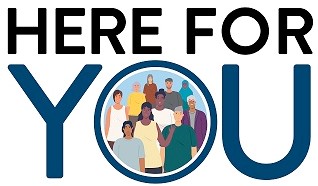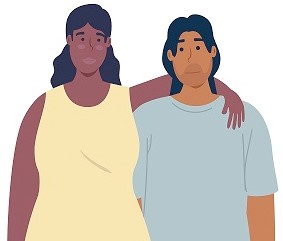Hazardous Sites & Substances
- Hazardous Sites & Substances
- Hazardous Waste Sites
- Topics
- Choose Safe Places Minnesota
- Environmental Exposures Grand Rounds
- Exposure and Health Investigations
- Contact us
Related Topics
- Water Contaminants and Your Health
- Cancer and the Environment
- Fish Consumption Guidance
- Children's Environmental Health
- Air Quality by Topic
- MN Public Health Data Access Portal
Environmental Health Division
Contact Info
Cancer and the Environment
Cancer can be scary and overwhelming especially if you or your loved one has been diagnosed. Questions about what causes cancer—and how the environment may play a role—are common and concerning. We invite you to watch this video, MDH Cancer and The Environment, for an overview.
MDH is here for you. Visit About Cancer for information including What is Cancer (PDF), Lowering Your Risk for Cancer (PDF), Monitoring Cancer in Minnesota (PDF) and what you can do if you have concerns about cancer.
MDH Environmental Health is here for you

The Environmental Health Division (EHD) of MDH focuses on many conditions in the environment that affect health. The “environment” includes the areas where we live, learn, work, worship, and play. It’s made up of the air we breathe, the water we drink, the food we eat, and other conditions we may not control, but which can affect our health. MDH EHD also works behind the scenes by performing inspections and enforcing rules and regulations, collecting and monitoring data, providing technical assistance, developing educational materials, and communicating with individuals and community groups.
Protecting Minnesotans from Environmental Harm (PDF)
Chemicals in the environment
The term "environment" includes air, water, and soil, but also substances and conditions in the workplace, schools, home, and other places people live, work, and play.
The most significant risks of developing cancer come from lifestyle factors. However, exposures to certain human-made and naturally occurring chemicals in the environment may contribute to an individual’s risk of developing cancer. Benzene, asbestos, vinyl chloride, radon, arsenic, and trichloroethylene are examples of toxic substances that can increase the risk of cancer when people are exposed to them.
The International Agency for Research on Cancer (IARC) has classified these substances (and many others) as known human carcinogens. Some other chemicals have been shown to cause cancer in animals, but there is not enough evidence to show these chemicals cause cancer in people. These chemicals are classified by IARC as possible or probable (suspected) human carcinogens. The type and amount of exposure to harmful chemicals influences the risk of developing cancer.
Table of Known Carcinogens (PDF)
Cancer and the Environment in the News (PDF)
What is a Cancer Cluster?
A cancer cluster is a greater than expected number of the same cancer or cancers with similar contributing factors that occur within a group of people in a geographic area over a period of time. It is not unusual to find numerous cases of cancer in one neighborhood, or even more than one cancer in the same household. Often it is just coincidence that cancer—an umbrella term for more than 100 different diseases—occurs in a number of people in one small area, or within one group. Minnesota Department of Health (MDH) staff receives about 15 to 20 calls each year from people concerned about cancer in their community or workplace. MDH staff takes each of these concerns seriously.
Reporting and Investigating Apparent Cancer Clusters (PDF)
Cancer is more common in some communities

When groups face differences in health outcomes, the differences are called “health disparities.” They are due to serious or prolonged social, economic, and environmental health inequities, such as structural racism, and a widespread lack of economic and educational opportunities. Because health inequities are based on social norms and values, change is possible.
Cancer affects different groups differently, and so it is an example of a health disparity. The burden of cancer falls more heavily on certain communities, especially Indigenous communities, communities of color, and other marginalized groups. People in these communities are affected by structural racism, historical trauma, and bias which make it harder to access care and resources that support health. Among people and populations that have a history of mistreatment, and whose culture was misunderstood, there can be high levels of distrust of government and health care organizations. The lack of trust makes it even harder for these individuals to access the things people need to be healthy and contributes to continuing health disparities. This means that people in some communities are at greater risk of developing or dying from cancer.
Health Inequities, Environmental Injustice, and Cancer (PDF)
Community Environmental Health studies

When Minnesotans have reason to be concerned about environmental contamination in their neighborhood, they may turn to the Minnesota Department of Health, a local public health agency, or other researchers to request a health study.
Community Environmental Health Studies (PDF)
Resources are available for community members who are concerned about environmental exposures in their neighborhoods. “Investigating Environmental Contamination: A Guide for Communities” was written by the Great Lakes Center for Children’s Environmental Health at the University of Illinois at Chicago, School of Public Health. The information and resources in this guide are intended to help community members take steps to figure out if contamination is affecting the health of members of their community.
Investigating Environmental Contamination: A Guide for Communities (PDF)
The Minnesota Department of Health created this Minnesota-specific supplement to provide more local sources of information and data, and to empower Minnesotans to learn about their environment and health by understanding outdoor pollution in the air, soil, and water. This Minnesota Supplement is not intended to be a stand-alone document and is most helpful when used in tandem with the original guide, “Investigating Environmental Contamination: A Guide for Communities.”
Investigating Environmental Contamination: A Guide for Communities—Minnesota Supplement (PDF)
Frequently asked questions

If you or a loved one has been diagnosed with cancer, you may be feeling fear, anger, anxiety, sadness, or other emotions. When people have concerns like these, they sometimes turn to the Minnesota Department of Health for answers. Here are some of the most frequently asked questions we receive.
Frequently Asked Questions about Cancer (PDF)
Contact us
Reporting concerns about cancer in your community
To share concerns about cancer in your community, please contact the Minnesota Cancer Reporting System (MCRS).
Reporting concerns about cancer in your community due to exposure to an environmental contaminant
Please contact the Site Assessment and Consultation Unit.
Other resources
The National Cancer Institute (NCI) is the largest cancer research organization in the country; supports research at universities, hospitals, foundations, and businesses throughout the U.S. and abroad.
- Cancer Causes and Prevention
NCI's SEER Program is the most authoritative source of information on cancer incidence and survival in the U.S.
- NCI’s Toll-Free Cancer Information Service for information about cancer and to request publications: 1-800-4-CANCER/1(800) 422-6237
The National Institute of Environmental Health Sciences (NIEHS) was established to reduce human illness caused by unhealthy substances in the environment. Activities include biomedical research, prevention, and intervention programs along with training, education, and community outreach efforts.
- National Toxicology Program (NTP): Coordinates toxicology research and testing activities within the U.S. Department of Health and Human Services(DHHS). Publishes a biennial Report on Carcinogens.
The Centers for Disease Control and Prevention (CDC) is an agency of the U.S. DHHS that is charged with promoting health and quality of life by controlling disease, injury, and disability:
The Agency for Toxic Substances and Disease Registry (ATSDR) is an agency of the U.S. DHHS that advisesthe EPA on hazardous waste issues. ATSDR has educational fact sheets about toxic chemicals.
The International Agency for Research on Cancer (IARC) is part of the World Health Organization (WHO) and has a mission to coordinate and conduct research on the causes of human cancer.
The Environmental Protection Agency (EPA) is a government regulatory agency charged by the U.S. Congress to protect human health and safeguard the natural environment
The American Cancer Society is the nationwide, community-based, voluntary health organization dedicated to eliminating cancer as a major health problem by preventing cancer, saving lives, and diminishing suffering from cancer, through research, education, advocacy, and service.
The Food & Drug Administration (FDA) monitors productsfor safety and helps safe and effective products reach the market in a timely way.
- The National Center for Toxicological Research
- FDA Consumer Hotline: 1(888) 463-6332
The Occupational Safety and Health Administration (OSHA) is an agency of the U.S. Department of Labor charged with preventing work-related injuries, illnesses, and deaths
The National Institute for Occupational Safety and Health (NIOSH) is an agency of the CDC that researches and makes recommendations to prevent work-related disease and injury.